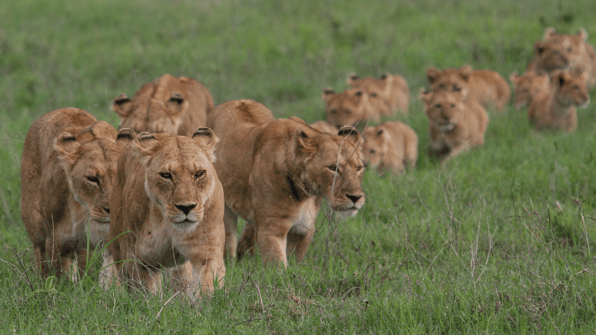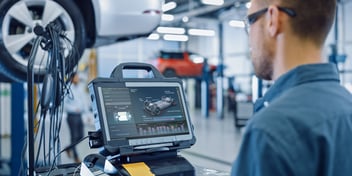

What are the technical challenges in IoT-based wildlife conservation?
The Internet of Things has countless applications, including playing a significant role in wildlife conservation.
In this article, we'll be looking at how IoT can aid in wildlife protection, as well as some of the technical challenges involved.
What is IoT-based wildlife conservation?
IoT-based wildlife conservation is a technocentric solution for investigating animal behaviours and protecting endangered species.
When implemented in a wildlife setting, IoT can be used in a number of ways. This includes both bolstering existing solutions and also creating new tools and opportunities.
Some of the IoT technology that can be used in wildlife protection includes:
- IoT collars that track the heart rate of the animal and issue alerts when the animal is in despair alongside its location
- Sensors that monitor the movement of animal groups
- Sensors that set up geofences to keep animals safe and out of dangerous areas, such as busy roads and rail tracks.
The technical challenges of IoT-based wildlife conservation
While IoT presents an excellent opportunity for improving wildlife conservation, deployment usually comes with a number of challenges that need to be addressed. This use case places devices in unpredictable scenarios and environments, which can cause several issues.
Size and durability of the wearables
One of the primary challenges of IoT-based wildlife conservation is the size and durability of the deployed wearables. Since some devices need to be worn by animals, they'll need to be small, non-obstructive, comfortable, and durable.
Durability is particularly important, since the deployed devices will be used in various weather conditions, in and under the water, bumped and rubbed against hard textured surfaces, and so on.
Not only do IoT devices need to hold up to these elements, but they also need to maintain connectivity and data accuracy. The long distances over which wildlife habitats usually spread also play a role, making long-range (or even global) connectivity essential.
Battery life of the device
An especially challenging component of IoT-based wildlife conservation is the need for long-lasting battery life. Since the deployed devices will need to be fitted to wild animals, battery replacement is not an easy task. And, of course, running out of power, minimises the chances of retrieving the device. It is, therefore, extremely important for such IoT devices to both incorporate a long-lasting battery and keep its use to a minimum.
When it comes to IoT-based wildlife conservation, it is necessary for the devices to be as unobtrusive as possible to the animal wearing them. This continuously pushes towards smaller device sizes which, in turn, puts limitations on the battery size.
At the same time, IoT devices deployed in the wild need to be equipped with a long-lasting battery. The main reason for that is the danger of losing the device in the wild. In such a case, if the device runs out of power, it is unlikely to retrieve it.
That can be tackled with the use of LPWANs (Low Power Wide Area Networks). LPWANs are designed to maximise battery life up to several years by only exchanging small amounts of data at longer intervals, making them an ideal option for wildlife conservation deployments.
Animal monitoring is difficult in remote large-scale wildlife areas
Finally, keeping your animal monitoring accurate and consistent in large-scale wildlife areas is difficult. Animals don't always move in predictable patterns, but it has been observed, that animal flocking follows specific rules and patterns, making mapping these patterns much more important.
In an outdoor environment with unpredictable terrain, connectivity can be unreliable, and accuracy and consistency in data transfer can be under par. In order to overcome that, a robust connectivity partner is necessary.
How can Velos IoT work together with IoT-based animal tracking device manufacturers to help wildlife conservation?
You don't have to overcome the challenges of IoT-based wildlife conservation alone. A partnership with a reliable provider like Velos IoT will give you access to multiple benefits.
Global roaming for wildlife conservation
At the core of Velos IoT's offering is global IoT connectivity. We have established hundreds of partnerships with operators and are able to offer global network coverage, so you can stay connected no matter where you deploy IoT devices.
Reliable connectivity to keep threatened animals safe
Connectivity for IoT-based wildlife conservation deployments does not only need to cover wide areas; it needs to be reliable too. Using Velos IoT's services will give you reliable global connectivity anywhere around the world.
Secure connections to keep critical info safe from attacks
Oftentimes poachers and other bad actors will try to access IoT data from wild animals for their own benefit. Velos IoT acknowledges the importance of network safety and is armed with security features and built-in services that ensure the safety of your data against such attacks.
Learn more about the benefits of Velos IoT today
To learn more about the benefits of Velos IoT and the opportunities it can provide for your IoT-based wildlife conservation efforts, reach out to our team of experts today by filling in the form below.
Speak to a Velos IoT expert
Related articles


Global cellular IoT connectivity for Vehicle Telematics
Implementing vehicle telematics and fleet tracking systems has become far more affordable in recent...

Real Time Managed IoT Connectivity Platform
Take full control of IoT devices with a managed IoT connectivity platform that empowers you with...
